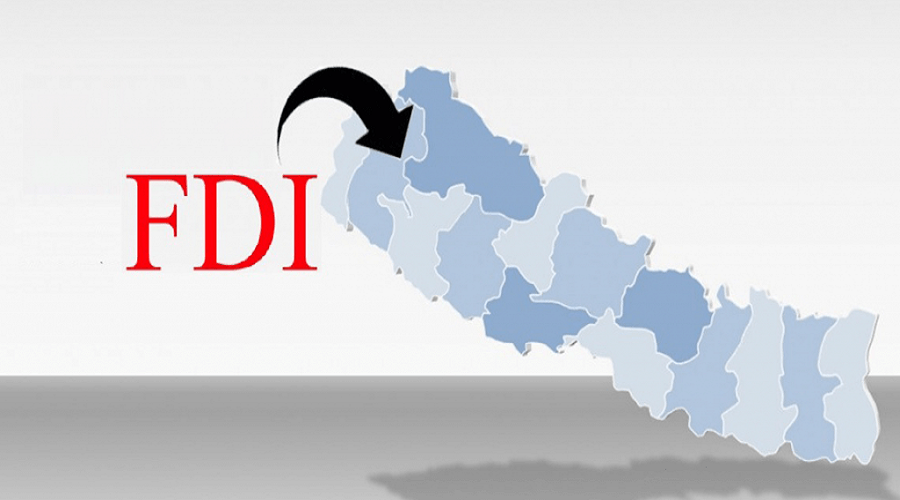KATHMANDU: Foreign Direct Investment (FDI) in Nepal has surged significantly, reaching Rs 44.40 billion by mid-June of the current fiscal year (FY) 2023/24. This marks an increase of over Rs 10 billion compared to the same period last year, which saw Rs 34.58 billion in FDI.
This year, the government organized an investment summit, which positively impacted investment inflows. According to the Department of Industry (DoI), a total of 359 FDI proposals have been approved by mid-June. In the month of Jestha (mid-May to mid-June) alone, foreign investment worth Rs 3 billion was approved.
It is estimated that 20,146 jobs will be created from the FDI approved this year, with 2,323 jobs expected to be generated from the FDI received in Jestha alone.
The government implemented the automatic route for FDI this year to facilitate the inflow of foreign investment. Through this route, Rs 11.81 billion in FDI was collected from mid-May to mid-June. According to the DoI, a total of 90 proposals were submitted through the automatic route by mid-June, with Rs 8.27 billion received from 68 proposals in mid-May to mid-June alone.
The latest data indicates that total FDI in Nepal has reached about Rs 500 billion. The DoI’s data shows that Rs 594.36 billion in FDI has been approved by mid-June. So far, 6,218 FDI projects have been approved, with an estimated 329,655 jobs expected to be created from these investments.
A significant portion of FDI has been directed toward small industries in Nepal. A total of 341 small industries received FDI this year, compared to 14 medium-scale and 4 large-scale industries. From mid-May to mid-June, the government approved FDI for 51 small industries, while only one medium-scale industry received approval for foreign direct investment.
Tourism has attracted a substantial portion of FDI. Nearly half of the total FDI sanctioned this year has been directed toward tourism, with 176 proposals approved, accounting for 49 percent of the total.
The service sector received 114 proposals (32 percent), followed by 40 proposals for the productive sector. The DoI’s data also shows 10 proposals approved in information technology, 8 in agriculture, 7 in infrastructure, 3 in mining, and 1 in energy.

